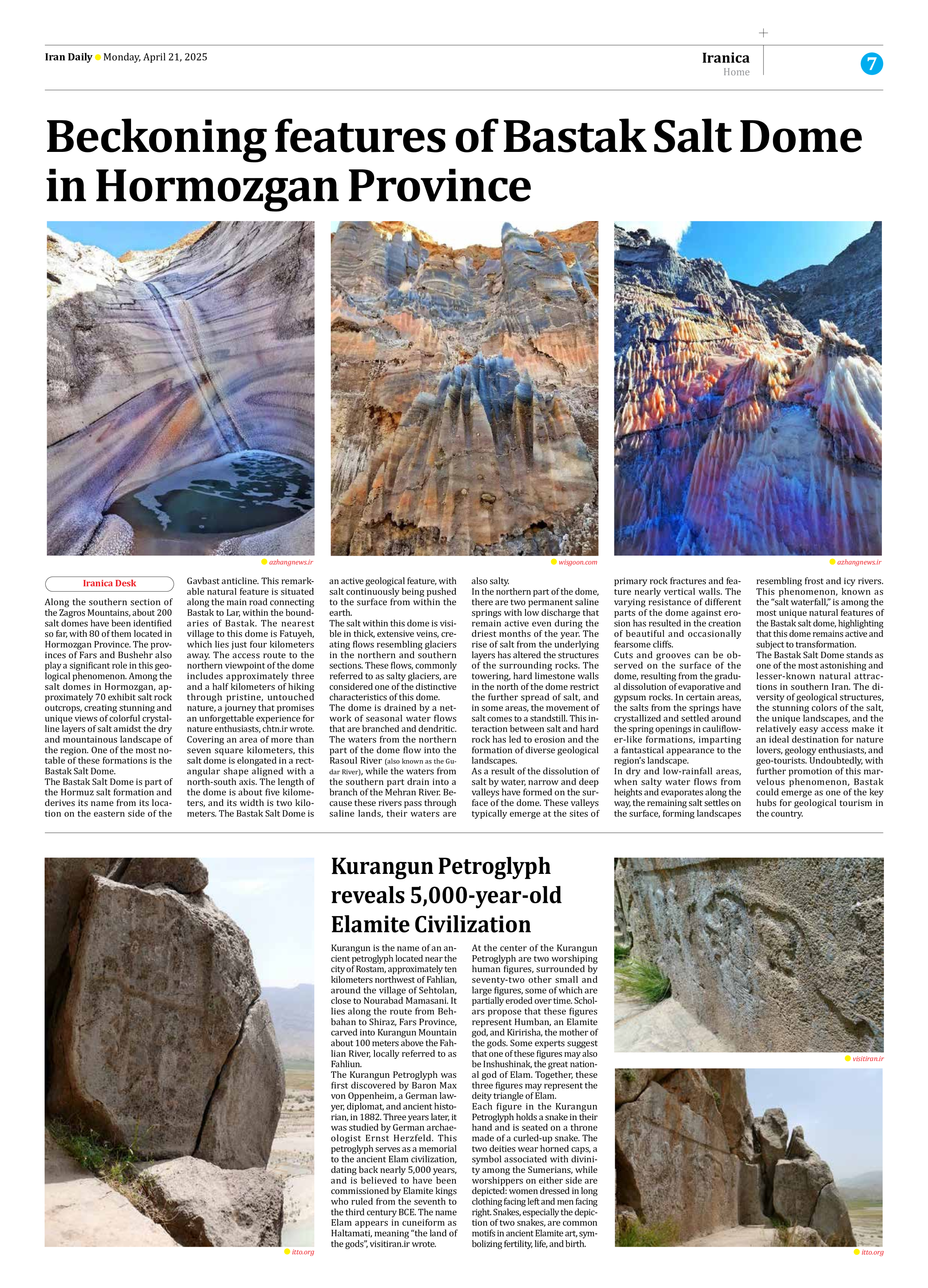
Kurangun Petroglyph reveals 5,000-year-old Elamite Civilization
Kurangun is the name of an ancient petroglyph located near the city of Rostam, approximately ten kilometers northwest of Fahlian, around the village of Sehtolan, close to Nourabad Mamasani. It lies along the route from Behbahan to Shiraz, Fars Province, carved into Kurangun Mountain about 100 meters above the Fahlian River, locally referred to as Fahliun.
The Kurangun Petroglyph was first discovered by Baron Max von Oppenheim, a German lawyer, diplomat, and ancient historian, in 1882. Three years later, it was studied by German archaeologist Ernst Herzfeld. This petroglyph serves as a memorial to the ancient Elam civilization, dating back nearly 5,000 years, and is believed to have been commissioned by Elamite kings who ruled from the seventh to the third century BCE. The name Elam appears in cuneiform as Haltamati, meaning “the land of the gods”, visitiran.ir wrote.
At the center of the Kurangun Petroglyph are two worshiping human figures, surrounded by seventy-two other small and large figures, some of which are partially eroded over time. Scholars propose that these figures represent Humban, an Elamite god, and Kiririsha, the mother of the gods. Some experts suggest that one of these figures may also be Inshushinak, the great national god of Elam. Together, these three figures may represent the deity triangle of Elam.
Each figure in the Kurangun Petroglyph holds a snake in their hand and is seated on a throne made of a curled-up snake. The two deities wear horned caps, a symbol associated with divinity among the Sumerians, while worshippers on either side are depicted: women dressed in long clothing facing left and men facing right. Snakes, especially the depiction of two snakes, are common motifs in ancient Elamite art, symbolizing fertility, life, and birth.







